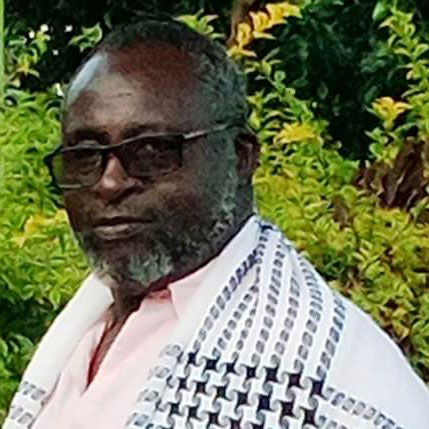Background
The story of Kenya is the story of a National identity forged out of the Colonial experience. A story of oxymorons. The story of an entity forged out of hitherto disparate polities and yoked together, learning to exist as one, proud of the history of resisting the Colonial enterprise, yet hanging onto the individual identities. We love Kenya but are not proud of the ways, means and the structures that formed it. ‘Love what I am but hate how I was begotten’ sort of thing! An irony! We are a State fashioned out of hitherto sovereign Nations that were brought together by force and guile. The South African refer to themselves as the ‘Rainbow Nation’. We are the ‘Harambee Nation’. A Nation that pulls together – a Nation that a representative of major races of the world knows to be home. Most importantly, we are a Nation that has clear and strong socio-political strata and culture. Our public political posturing has by and large been a reflection of dominant and/or competing ideologies. We have sought to understand who we, as a people – independent people at that – are, where we wish to be and how we hope to get there. We have espoused hope and aspirations but have not been completely able to overcome our fears.
Our vision of ourselves – both as the totality of the people legally referred to as Citizens of Kenya, as Members of distinct Ethnic/Racial constellations, individuals – has by and large determined which identities we have sought to highlight where, when and with whom. Our identities, while as clear as a diamond and as hard as concrete in the face of the non-Kenyan, remain very fluid back home. While race, ethnicity, religion and (mostly) economic interests have featured as catalysts for mobilization and association, political aspirations, and desired destinations have always been outlined and canvassed in sustainable ways by mobilization and associations based on like mindedness. The post-colonial political groupings of KANU and KADU were thus organized around the 2 governance visions of Centrism (KANU) and Regionalism (KADU). Within KANU itself were two visions (Capitalism and Socialism) in contention. As both sides dug in, it was inevitable that the dominant faction in the then ruling Party KANU eject the less dominant. Hot on the heels of this was the amendment of the constitution making Kenya a De Jure One-Party State. And with this, we witnessed the first steps of ‘taming the Republic’ by a Constitutional amendment. A new challenge to a new Republic that was just in its second decade of Independence.
KANU’s Big Foot
The Single Party State that emerged out of the insertion of Section 2 into our constitution was subjugated to KANU – the Ruling Party. KANU went on an open ‘shopping spree’. It arrogated to itself ownership of the Kenyatta International Conference Centre (as it was then known). It affiliated the Maendeleo Ya Wanawake Organization and the Central Organization of Trade Unions (COTU) to itself. KANU Youth Wingers had more clout than the Police and would harass anybody they wished at will. This writer has personal experience. KANU was not done. It identified and brought to its beck and call a coterie of academics and harassed those who resisted. Already controlling the National Broadcaster, the Voice of Kenya (VOK), KANU also introduced a National Daily Newspaper – the Kenya Times. It was the Party’s Propaganda rag, which sold mostly because it carried most (if not all) the advertisements placed by Government. These included Tender announcements. But perhaps KANU’s overreach was in its desire to have in Parliament men and women who would serve not as the People’s representatives, but as conveyor belts for the outcomes desired by the KANU High Command. The KANU Big Wigs distrusted the political system in vogue to deliver for them such men and women. So KANU loaded the ‘nomination’ process and adopted the queue-voting system. This ensured that the KANU ‘anointed’ contestant emerged the ‘Winner’ even if his/hers was the shortest queue. One of the casualties of such outcomes was Stanley Njindo Matiba who lost in his constituency.
Surviving the KANU Blitz Krieg
The KANU overreach was resisted by Patriotic Citizens from many sites. Most prominent of these sites were the universities where a very select category of lecturers passed deserving criticism against the Moi regime. These voices were augmented by student resistance action. Often these turned violent as police stormed the campuses. Batterings, even deaths were reported. Moi’s response to the students’ expression was ‘no holds barred’. Student leaders were hounded, their academic lives interrupted and dislocated. A number were jailed. Some were killed, while quite a few went into exile. Another site of resistance was in the Media. While mainstream publications such as the Weekly Review and bold editorials from the Daily Nation and the Standard decried the ‘Bad Governance’ of the time, the Independent Publications that had sprung up such as the Nairobi Law Monthly, Society, Finance, the NCCK’s Beyond captured and disseminated without fear the vision and aspiration of the anti-KANU forces. Courageous members of the clergy used their pulpits and as in the case of the Catholics, the Encyclicals, to call Moi to order and to rally the citizens to redemption from the One-Party rule. Unknown to most Kenyans, a number of their co-citizens were organizing ‘Underground’ both within and without the country – ushering into the public political discourse the ‘Mwakenya’ phenomenon.
Moi became touchy, intolerant to the idea of any political organization outside the KANU behemoth. When it was rumoured that Jaramogi Oginga Odinga and George Moseti Anyona intended to meet to form a Political Party, he promptly detained them. In early July 1990, Charles Rubia and Stanley Njindo Matiba (who had resigned from Moi’s cabinet) made it known that they intended to address the public from the historic Kamukunji Grounds on the seventh day of that month. They were promptly rounded up – together with Jaramogi Oginga Odinga, lawyers Gitobu Imanyara, Dr John Khaminwa and Mohammed Ibrahim, and detained them. As if on cue, Martin Shikuku, James Orengo and John Gachoka took up the baton and led a throng of citizens to get to the Kamukunji Grounds on that material day i.e 7July 1990. This was the birth of ‘Saba Saba’ – a milestone in the politics of the Second Liberation of Kenya.
Abdulrahman Mirimo Wandati – a Cog within the SabaSaba Movement and a foot note in the chapter of the Second Liberation of Kenya and beyond . . .
I had been head-hunted by the Young Muslim Association from my home in Butere where I was running a Madrassa in the Butere Jamia Mosque in 1988; and recruited as the National Youth and Da’awah Coordinator. In today’s political parlance, I could be categorized as ‘Dynasty’ given the ‘blue blood’ on my mother’s side and the political presence and leadership on my paternal side.
I had grown up in Idi Amin’s Uganda in the house of my mother’s elder sister and her husband. My aunt was, by all standards ‘book illiterate’. She however was very political and influential within her sphere. She was loud, boisterous and ready to face off with anybody who trod on what she considered her rights. Her husband – a veteran of the Second World War Kings African Rifles was a refined, cool headed and quiet person. A gentleman. It is in the hands of these two that I was inducted into the political world and trained. In this household, we listened to NEWS in various languages from various stations. These included Deutch Welle, Radio Peking, Radio Sauti Ya Injili – Addis Ababa Ethiopia, Voice of Kenya, and of course Voice of Uganda. Although my aunt would have the radio held close to her ear, she promptly demanded a recount of what was said immediately the Bulletin ended. I was in Primary two when Tom Mboya was assassinated. I read the newspaper report to my aunt. My uncle on his part allowed me to sit in as he and his friends whiled away time in conversations that covered a whole range of topics including the politics of the East African Community. My coming to Nairobi coincided with the introduction of the ‘Screening Card’ for Kenyans of Somali extraction. I protested vehemently through a Letter to the Editor.
7 July 1990 was a Saturday, and I had reported to work as usual for the half day. It was difficult however to ignore the excitement that was in the air. So I left the office which was opposite Post bank House and made it to the Jamia Mosque, Nairobi Court yard. I was soon joined by my friend, Abdiqadir Abdillahi Nassir, with whom we spent some time reflecting upon the political goings on in the country and if he and I had a role – if any. The long and short of it is that we decided to be part of that historical day, and promptly left to join other Kenyans at Kamukunji. Our clear intentions and set resolves were cut short when we were confronted and dispersed by baton–wielding policemen. We ran for our dear lives, each his own way, not to meet again on that day. In my haste to save my skin, I had jumped through an open door of a house in Majengo and closed the door, bolting the owners – whoever they were – outside. After my pounding heart stabilized, I left only to fall into another posse of policemen. They asked me where I lived and I said ‘Mathare North’. They pointed me to the direction as launched me off with a heavy truncheon jab on my rump. I went home from where I picked as much as possible of what had transpired that day from the BBC Africa Service. I learnt that not only had it been made impossible for any meeting to take place but up to twenty Kenyans had been killed, many maimed and millions of shillings’ worth of property destroyed.








